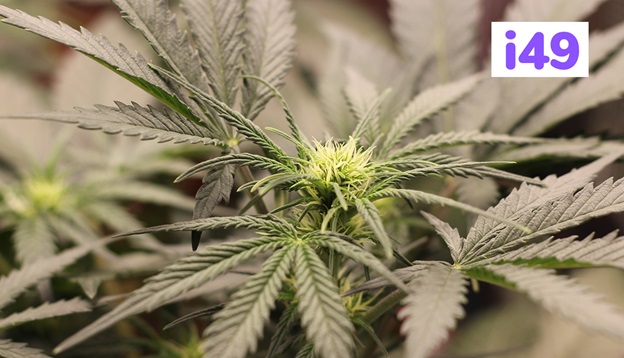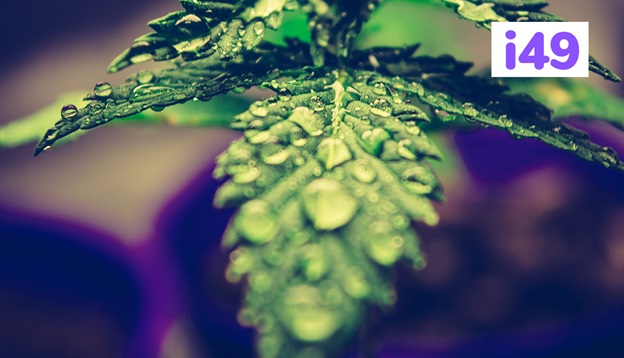Hey there! Do you know what is similar between your body and a cannabis plant? They are both 90% water. Cool, right?
This is why water is the most crucial one of all the resources a marijuana plant needs. From photosynthesis to transpiration, all the biological processes of the cannabis plant need water.
New cannabis growers often commit watering errors. Both overwatering and under-watering can prove fatal for a cannabis plant’s health. Overwatering can cause diseases, pests and mold infestation. Under-watering stunts the growth of the marijuana plants, eventually leading to death.
Though it might seem like the easiest part of taking care of your cannabis crop, watering is an art in itself. You need a low down on when and how to water them so that you get the most healthy harvest from your marijuana babies.
Here, let me share with you a complete guide to creating a healthy watering schedule for your cannabis cultivation.
Let me begin by listing some common problems that cannabis plants face due to incorrect watering and their symptoms.
Cannabis Plant Issues Due To Incorrect Watering
If a plant is not watered properly, it will show signs in the leaves, stems and roots. Wilting or drooping are the most common problems the marijuana plants suffer due to poor watering.
If the roots get damaged, it becomes difficult for the plant to recover. They lose vitality and become susceptible to multiple diseases, fungus and pest infestation and might eventually die.
The Plant Might Show Symptoms Like:
- Wilting
- Delayed growth
- Drooping
- Weakened stems
Leaves Show The Following Signs :
- Affected upper leaves and new growth
- Affected bottom leaves and old growth
- Slowed growth
- Downward curling leaves
- Burnt leaf tips
- The appearance of specks or spots
- Brown leaves
If The Root System Is Affected, You Will Notice:
- Mushy roots
- Smelly roots
- Slowed growth
Quality Of The Water
When you water the plants, remember that the water source is important; it determines the quality of water. Try to use filtered water. If you can get reverse osmosis water, that would be best.
You can also use tap water but leave it for a day for the pH levels to get settled. After that, check the pH levels using testing strips. You can add pH down after that to adjust it to the needed pH level.
Generally, plants growing in soil need a pH level between 6.0 and 6.8. If they are growing in other mediums, 5.5 to 6.0 pH is healthy.
While adding nutrients to the water, adjust the pH level of water from before. Always use water at room temperature; otherwise, the plants might be in shock.
Now, take a look at what you need to know about watering your cannabis plant in each stage.

Watering Cannabis Seedlings
The seedling stage is generally 1 to 3 weeks long. These babies need heavy moisture content in their environment. To keep the humidity to around 70% in the seedling stage, wet the rooting medium every 2-3 days or till it becomes completely dry.
Some use coco perlite or tiny rooting cubes for rooting; they need a very small amount of water. If the medium gets soaking wet, it might cause the roots to rot. The grower must find an effective wet-dry cycle for rooting.
Most rooting cubes already carry a little bit of fertilizers. Therefore, ordinary tap water is sufficient for them. However, for hydro growers using nutrient-free mediums like Rockwool, or if you are using paper napkins, you might need to add a tiny amount of nutrients in the water. Begin with 10 or 20 percent of the suggested dosage and increase gradually.
The organic nutrient pack by i49 is my best bet for cannabis nutrients. The pack contains nutrients for all the growing stages and is best for both new growers and veterans.
Inexpensive spray bottles are great for misting cannabis seedlings. Keep an eye on the roots. When you see the rooting cubes becoming thorny with tiny white roots protruding out of them, it is time to place the seedling in a container.
Watering A Vegetative Stage Cannabis Plant
Place the rooting cubes directly on a container after the seedling stage is over. You can also plant the baby plant in soil. It is best to use a container that is medium in size. Too big a container will make it difficult for the plant to absorb nutrients from the soil. On the other hand, if the container is small, the roots might not get enough space to grow. Check the container and aerate the soil well to ensure drainage.
When you observe the plant for a few days, you will begin to understand its habits and the watering schedule it requires. Compare the weight of the dry soil and wet soil to understand the interval needed between each watering.
If you are using a hydroponic system, monitor the responses of the plant with increased attention.
This is the period when vigorous growth happens in a cannabis plant. Therefore, it requires a lot of water at this stage.
Your cannabis plant in the soil might be happy if you water it one to three times a week during its vegetative stage. The container size also plays a role in how frequently a plant needs to be watered. A simple watering schedule works fine in this phase. If your potting soil has enough nutrients, you might not need to add any during this phase.
Stick your finger in the soil to check how wet it is. This is important if you are growing outdoors. If you feel dry soil up to an inch, your plant needs to be watered. Pay heed to the rainfall in the area and notice if it is taking care of the watering requirements of your cannabis plant.

Watering Needs of a Flowering Cannabis
Cannabis plants become mature by the time they enter the flowering stage. You might need them to transfer into bigger and final containers when they get prepared for flowering. You might need to add nutrients designed for blooming into the water. Watering around three to four times a week should be adequate during this period.
However, the requirements of the nutrient are different for different strains. Some might like more nutrients, whereas others do well with a small amount. Watering might thus become a challenge during this stage of the cannabis plant. Add blossoming nutrients and stimulants if you have been using pure tap water.
If you have been growing using hydroponics, transition to the early stages of flowering from the vegetative stage might be a little easier for you. Start by adding blooming nutrients in a small quantity and slowly increase the dose by observing how the plant responds to the added nutrient.
The final one or two weeks must be reserved for flushing the plant. Flushing is the process of getting rid of excess nutrients by heavily watering the plant. This means you have to feed the plant with double the volume of your usual watering quantity.
Keep an eye on how your plant responds to it. You might also flush your plant gradually with the usual water quantity for two weeks. Flushing also removes from the buds any nutrient taste. Many growers use flushing if the plant is overfed with nutrients at any stage of its life cycle.
However, you need to ensure great drainage after flushing, or your plants might suffer from root rot or other issues. Your plant should never be sitting in puddles of water.

In Conclusion
A marvelous harvest is produced with months of effort, diligence and patience. If you are a newbie, settle for sturdy and forgiving strains. Once you master the watering schedule, taking care of the plants will become easier.
I hope you have a great harvest. Enjoy your growing journey.


